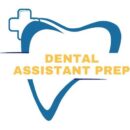Master your DANB continuing education credits with ease and excel in dental assisting.
- Streamline Your Credentials: Learn how to efficiently track your DANB credits and stay compliant.
- Expand Opportunities: Harness continuing education to fuel career advancement and skill enhancement.
- Provider Insights: Identify the premier sources for DANB-approved education courses.
Navigate the path to renewable success with DANB continuing education credits.
Understanding Continuing Education Requirements
Continuing education (CE) is a cornerstone of maintaining your credentials as a dental assistant, ensuring that you’re informed of the latest practices and technologies in the field. The Dental Assisting National Board has established continuing education standards every certificant must meet. Understanding these requirements is essential for your compliance and professional growth.
What is Required for DANB Recertification?
As per DANB, dental professionals must engage in Continuing Dental Education (CDE) to maintain their certification. Recertification periods can vary depending on the specific DANB certification and the individual’s circumstances.
- Number of Credits: The number of required CDE credits annually can depend on the DANB certification you hold. It’s important to frequently review DANB’s guidelines to understand the exact number of credits required for your certification.
- Types of Accepted Credits: Education can come from a variety of sources, such as college courses, seminars, publications, online learning modules, and more. Always verify the acceptability of the chosen course with criteria.
- Record Keeping: Maintain records of your CDE activity, such as certificates of completion, transcripts, or other official documents. DANB may carry out auditing; thus, keeping extensive and organized documentation is critical.
For continued certification, current CPR certification by a DANB-recognized provider is mandatory. Maintaining these certifications shows an ongoing dedication to the field and increases employability and professional credibility. See more at certifications page.
Tracking and Submitting CDE Credits
Keeping a diligent record of your CDE credits is crucial. Implementing a system to track your CE hours will save you time when you are due for recertification.
- Log each completed course with its date and credit hours.
- Keep electronic copies of all CE documentation in a dedicated folder.
- Consider using digital tools such as spreadsheet software or dedicated CE tracking applications.
Longevity and Rewards
DANB values long-term commitment. Those who maintain DANB certification for extended periods are recognized, with tokens of appreciation given to individuals at 5, 10, and 15-year intervals. This incentive program highlights aim to encourage lifelong learning in dental assisting.
Types of Continuing Education Credits for DANB
Continuing education comes in many forms, and dental professionals have the flexibility to choose how they learn best, whether through in-person or online environments.
Online Learning
- Ease of Access: Online learning has become increasingly popular due to its convenience. Professionals can often complete courses at their own pace and from the comfort of their home or office.
- DALE Foundation Courses: The DALE Foundation offers various online courses and articles valued between 2 to 12 CDE credits that cover multiple aspects of dental assisting and are tailored to meet recertification requirements. Explore their course options at DALE Foundation’s courses page.
In-Person Education
Seminars, workshops, and lectures make up a significant portion of face-to-face CE opportunities. These events not only provide education but also networking opportunities with peers.
Alternative Credit Sources
Credits can also be earned through alternative avenues such as teaching, publishing in dental journals, or volunteer work. DANB acknowledges that these experiences contribute to a professional’s expertise and development.
How to Earn DANB Continuing Education Credits
Garnering your CE credits can be an adventure in learning that spans an array of platforms and experiences. Here is how to approach it:
Deciding on a Learning Platform
Evaluate what kind of learner you are and choose a method that aligns with your learning preferences. Do you prefer online courses, or do you learn best in-person?
Finding Relevant Courses
Seek courses that not only fulfill the credit requirements but also interest you and are relevant to your work. Expand your knowledge in an area you’re passionate about.
Attending Conferences and Seminars
Regularly attend industry conferences and seminars. These events can provide a wealth of knowledge and a significant number of CE credits.
Enrolling in College Courses
Consider enrolling in relevant college courses that offer CE credits. This can be an excellent opportunity to delve deeper into a subject area.
DANB Accepted Providers and Courses
Selecting the right provider for your continuing education endeavors is pivotal. With a myriad of options available, ensuring that your chosen course or provider is DANB-accepted will secure the validity of your efforts.
Identifying DANB-Recognized Providers
Recognized providers, including the DALE Foundation, are listed on website. These providers are vetted and meet the quality standards set by DANB.
Verifying Course Acceptability
Before enrolling in any CE course, always verify its acceptability with DANB. This can be done by checking list of recognized providers or directly contacting DANB for clarification.
Continuing Education for CPR
CPR courses must also be from approved providers. DANB provides a list of recognized CPR courses, which is a crucial component of your certification maintenance. Further information can be found on the DANB CPR page.
In selecting courses and planning your CE activities, utilizing resources wisely and having a clear understanding of requirements can streamline the process, ensuring that you remain a certified professional dedicated to the highest standards of dental care.
Keeping Track of Your Continuing Education Credits
Efficiently managing your DANB continuing education credits is essential to ensure seamless recertification. Here are strategies to help you keep things organized and up-to-date:
Utilize Digital Tools for Management
Take advantage of modern technology to stay on top of your credits. Use applications such as CE Zoom or CE Broker which are designed specifically to help healthcare professionals track their continuing education credits. These tools can also assist in ensuring compliance with state-specific requirements and generate reports when it’s time to renew your certification.
Develop a Record-Keeping System
- Physical Documentation: Keep a physical copy of all CE certificates or transcriptions in a dedicated file.
- Digital Backup: Make sure to have a digital backup as well. Scan or take photographs of your documents and store them in a secure cloud service.
Stay Proactive with Deadlines
Tracking credits is not just about maintaining records; it’s also about being mindful of certification renewal deadlines. Set reminders for yourself well in advance to avoid any last-minute rush which could potentially lead to oversights.
Renewing Your Certification with DANB
Don’t let your hard-earned certification lapse due to oversight. Stay informed about the process and embody a proactive approach.
Submitting Your Renewal Application
- Gather all your CDE documentation and ascertain you have met all required credits.
- Complete the DANB recertification application, which can be found through renewal page.
- Pay any applicable renewal fees associated with your certification.
Understand the Renewal Timeline
The deadline for recertification is annually. Certificants should begin the renewal process several months in advance to account for any contingencies.
Overcoming Common Challenges with Continuing Education
Life can throw curveballs that complicate the pursuit of your CE credits. Here’s how to tackle some common challenges:
Time Management
- Planning: Create a schedule to evenly distribute your CE activities throughout the year.
- Convenience: Lean on online CDE courses that offer flexibility to fit learning into your busy lifestyle.
Financial Constraints
- Budgeting: Set aside a dedicated budget for continuing education.
- Employer Assistance: Some employers offer reimbursement for CE courses. Don’t hesitate to ask if such benefits are available to you.
Staying Motivated
- Personal Development: Remember that each course is an investment in yourself and your career.
- Community Support: Engage with a network of peers who are pursuing similar goals. It’s easier to stay motivated when you’re part of a supportive group.
Furthering Your Dental Career through Continuing Education
Continuing education is not only a requirement but an opportunity for professional growth and advancement.
Enhancing Clinical Skills
Sharpening your clinical acumen through CE not only maintains proficiency but also elevates patient care. The DALE Foundation provides a variety of online courses targeted to enhance your clinical skills and knowledge.
Expanding Professional Opportunities
Invest in learning new skills and technologies. This dedication can lead to new job roles and responsibilities. It could pave the way to promotion or recognition within your dental team or open doors to advanced positions in the industry.
Lifelong Learning as a Career Philosophy
Adopting a mindset of lifelong learning keeps you at the forefront of dental assisting. Courses offered from reputable sources such as the DALE Foundation are designed to help you keep pace with a rapidly evolving field.
Conclusion: Commitment to Lifelong Learning in Dental Assisting
The journey towards maintaining your DANB certification through continuing education credits is a rich path laden with opportunities for personal and professional development. By staying organized, proactive, and dedicated to lifelong learning, you are not only complying with requirements but are also setting a foundation for excellence in the dental field. Embrace the process as part of your ongoing commitment to being the best dental professional you can be.

